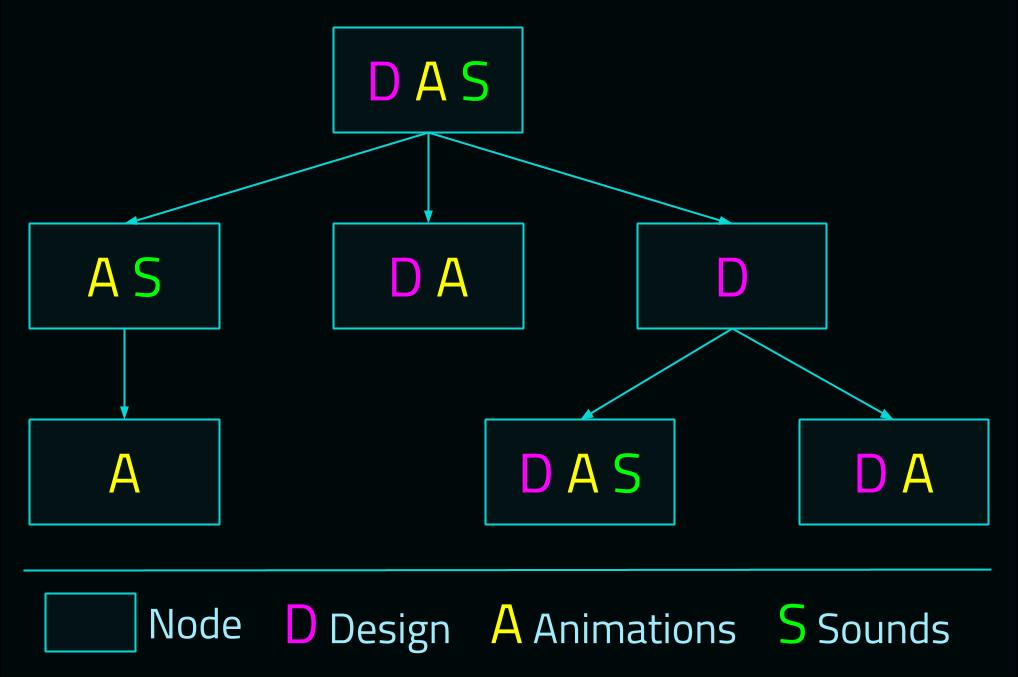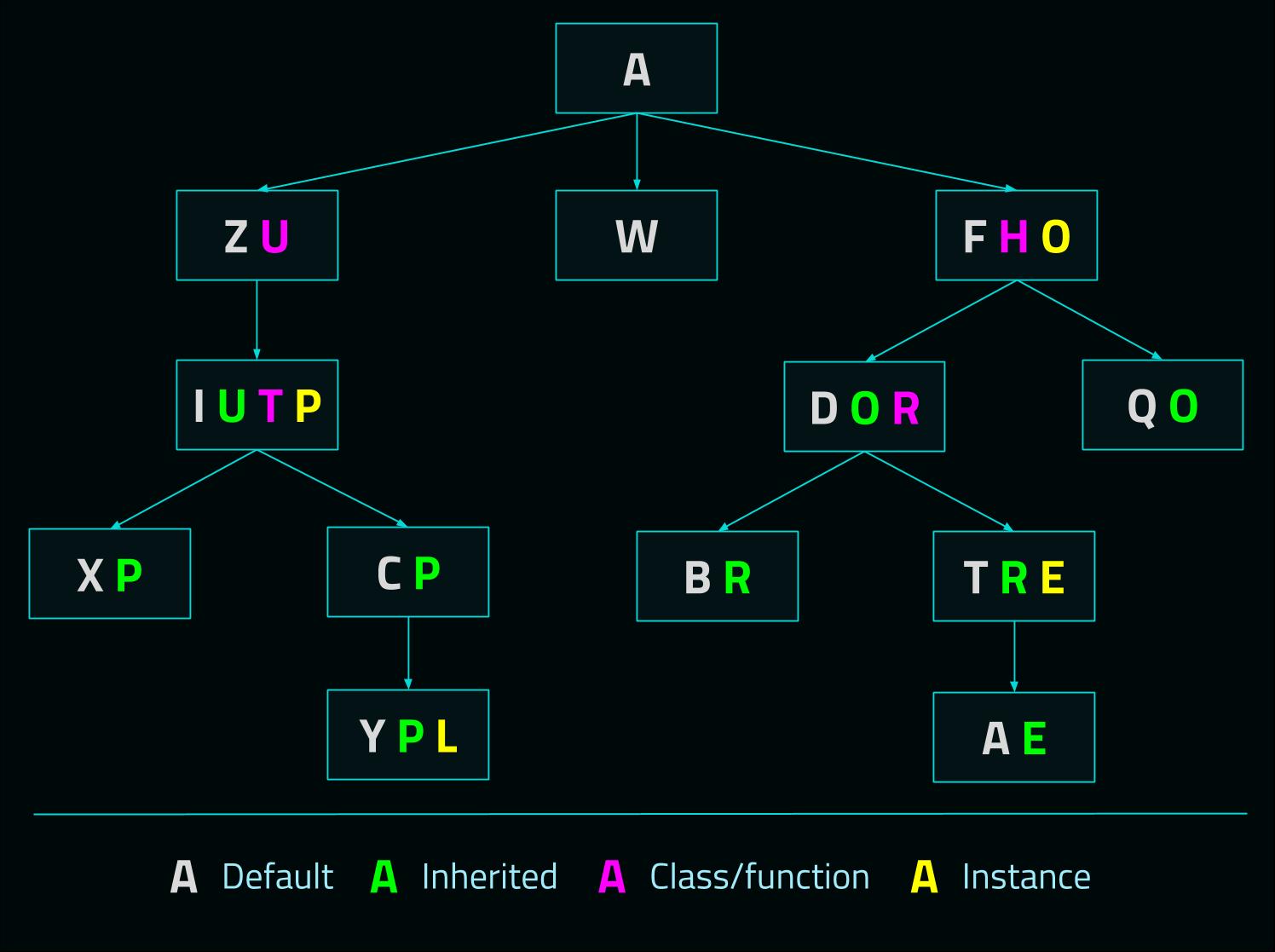Systems
Arwes UI applications are rich in visual, animations, and sounds effects, which can be structured as a tree of nodes.
A node represents and interactive and stateful UI component with design, animations, and/or sounds support. The nodes in a tree are interconnected with each other by inheriting data and communicating dynamically.
An Arwes system is a dynamically interconnected tree of nodes.

In the example above, each node has defined which combination of features to use. Some of them only have design features, others only animations, others only animations and sounds, others all of the features available, and so on. But all of them are inteconnected some way or another.
Data
A node receives data as settings to configure its characteristics and behavior. This data can be received from many sources according to the system it is part of and its specific configuration.
Any node can have general non-specific settings which can be inherited to children nodes. It can also have specific settings which are only applicable to the node alone but can generate effects on other nodes.
Transition and persistent states are defined in each node to manage complex interface effects. These states can affect children node states.
The interactive and programatic events specified in a node component can change its state and behavior based on its defined settings.
Extensibility
Nodes in a system will look for data to define its settings from different sources in an specific order.
- Default settings configured for the node to always start off even if it is alone in the system.
- Inherited settings obtained from parent nodes or certain data providers if they exist. The node will look for the data provided by different nodes or providers up in the tree if needed.
- Node class or function definition settings. These settings are applicable to all the component instances of the class or function definition. They can be extended or overwrited.
- Node instance settings directly defined.
A node should be listening to the system changes to react accordingly.

In the example above, each of the different types of nodes will receive a value represented as a letter. The value is extended from left to right. Priority increases to the right. The value to the right is the one used by the node.
Support
All nodes in a system must work with or without any of its design, animations, or sounds features.
Arwes system functionalities depend on the functional tools to work together. Changing the environment will result in many aspects to be limited or restricted.

